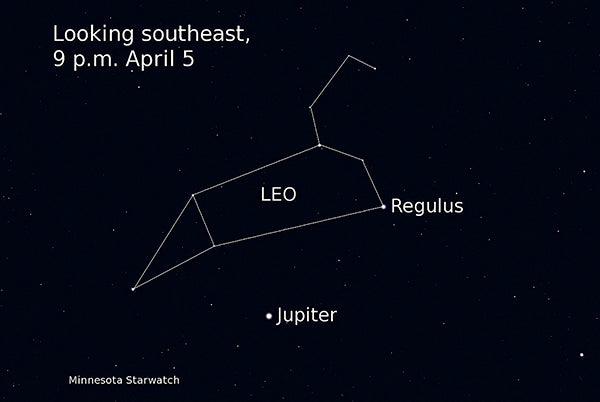Star Watch:Mercury takes to the April skies
Published 11:01 am Sunday, April 3, 2016

By Deane Morrison
University of Minnesota
Mercury, the messenger of the gods, pops into the evening sky in April, making its best evening appearance of the year. Look to the west-northwest an hour after sunset around the 18th, when it will be farthest from the sun.
Jupiter, blazing below the constellation Leo, the lion, comes out in the southeast to south at nightfall. Leo’s head is marked by the backward question mark of stars called the Sickle, with its brightest star, Regulus, at the base. The lion rides high in the south during the peak evening viewing hours, as if driving the bright winter constellations toward the western horizon.
In the predawn sky, Saturn and Mars draw closer until the 20th, then start to separate. The two planets appear somewhat low in the south to southwest, above the red star Antares in Scorpius, with Saturn the easternmost. Mars draws closest to Antares, whose name means “rival of Mars,” on the 26th, but a bright waning moon may wash them out a bit. To avoid moonlight, try viewing the rivals at about 5 a.m. between the 4th and the 18th.
April’s full moon comes at 12:24 a.m. CDT on the 22nd. Algonquin Indians called this the full pink moon, for the wildflowers known as grass pink or wild ground phlox, which bloomed in early spring. At fullness the moon will be just one day past apogee, its farthest point from Earth in a lunar cycle, and will be the most distant and smallest-looking full moon of the year. Come November, though, we’ll have a big, close perigee moon.
Sundown on April 30 begins the astronomically based Celtic holiday Beltane, one of the four “cross-quarter days” falling midway between an equinox and a solstice. Between sundown and sunrise that night, the evil spirits that had been on the loose since Halloween had a last fling before being banished for the next six months. Beltane marked the start of what was called the light half of the year, and it survives today as May Day.

